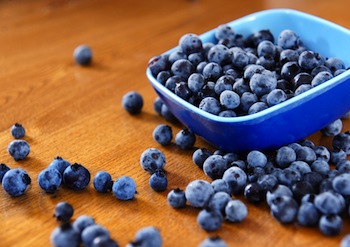Chile set for improved 2014-15 blueberry campaign
Like many summer fruit sectors across Chile, the country’s blueberry sector is expecting a better campaign in 2014-15 compared to last year when frosts damaged a significant portion of the crop.
In addition to weather issues, last season the industry not only had to adapt to the detection of the pest Lobesia botrana and a subsequent tightening of import regulations in the U.S., but also bore the cost of port strikes in January.
Chilean Blueberry Committee executive director Andrés Armstrong told www.freshfruitportal.com the season was more advanced year-on-year, with expectations volume would be higher at more than 100,000 metric tons (MT).
“Our estimates indicate that the start of the peak production weeks shuld begin in week 48, which means that from the start of week 51 we’ll have promotional volumes in destination markets,” he said.
He said the challenge now was for the industry to be able to harvest and process the fruit in a way that ensured the best quality.
“With that we have the best possibilities to meet the second challenge, which is to sell the fruit at the best prices,” Armstrong said.
When asked about Lobesia, also known as Grapevine Moth, he said the industry needed to implement rigorous control programs, treating blueberries as an “occasional host” while working on reducing restrictions imposed by foreign markets.
“Last season we didn’t see a great impact on the quality of the product from Lobesia botrana. Harnessing firm fruit became one of the keys to maintaining the adequate quality for our clients,” he said.
“This season with more volume available, this requirement will be more relevant.
The executive added the committee had led several activities designed to achieve consistent fruit quality, along with promotional campaigns in overseas markets.
He said the significant and consistent growth of Asian and European markets should continue this season, but higher volumes would also allow for the industry to get back on the growth path for U.S.-bound shipments despite the country’s import restrictions.
Last season, shipments to Asia grew 42%, implying 2,000MT more blueberries in the market. Europe’s purchases increased by the same volume, implying growth of 14%.
Within Asia, China’s imports of Chilean cherries increased by 61%, and Armstrong believed that market would continue to improve as more local consumption came on-line during the counterseason and promoted blueberry consumption habits.
“Obviously if the supply grows more in some specific weeks that could lead to a feeling of oversupply. For now, Chile is the only supplier that has access for its fresh blueberries in China; when this changes there will be supply from other countries in some periods during our harvest,” Armstrong said.
He added that South Korea was the second-largest destination market for Chilean blueberries in the region.
“We will strengthen our promotion activities in this market, which has given a favorable response to the Chilean supply. It is a market that already consumes considerable volumes of frozen blueberries, and that is learning to appreciate our fresh product.”
When asked about the impacts of the Russian ban on EU-grown fruit, he said Chile’s blueberry industry had been working on the Russian ban for many seasons.
“We know that it’s growing,” he said.
“There is no special opportunity in the case of Chile as during our season there is no supply from Europe, which will be already in the middle of winter and won’t have production.”
Armstrong concluded there was room for growth in Chile’s organic blueberry sector, but organically-grown fruit from the country’s VI (O’Higgins), VII (Maule) and VIII (Biobio) could not be shipped to the U.S. due to its requirements for treating Lobesia botrana.
Around 10% of Chile’s planted area dedicated to blueberries has organic certification.
10/14/2014
Fresh Fruit Portal






